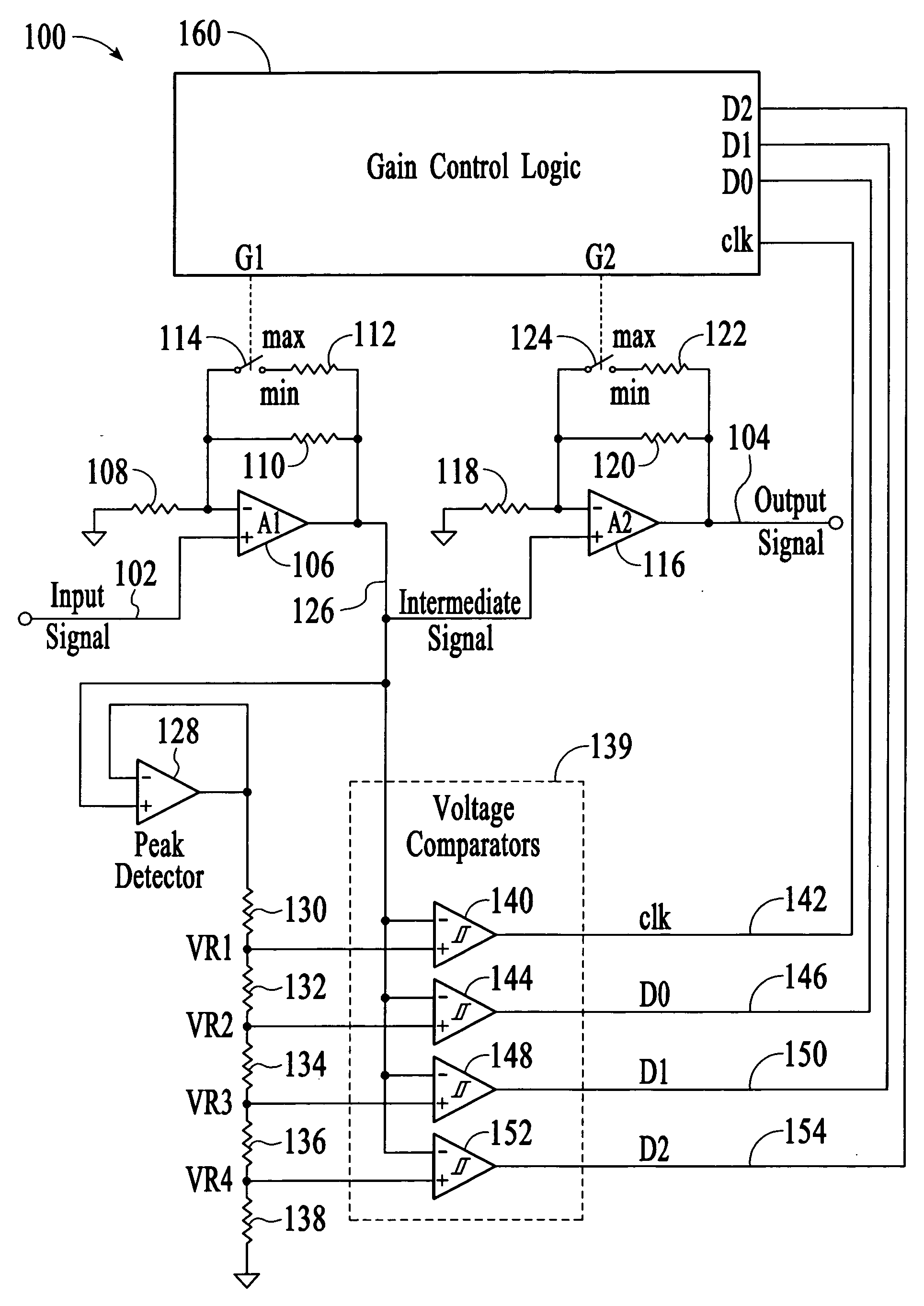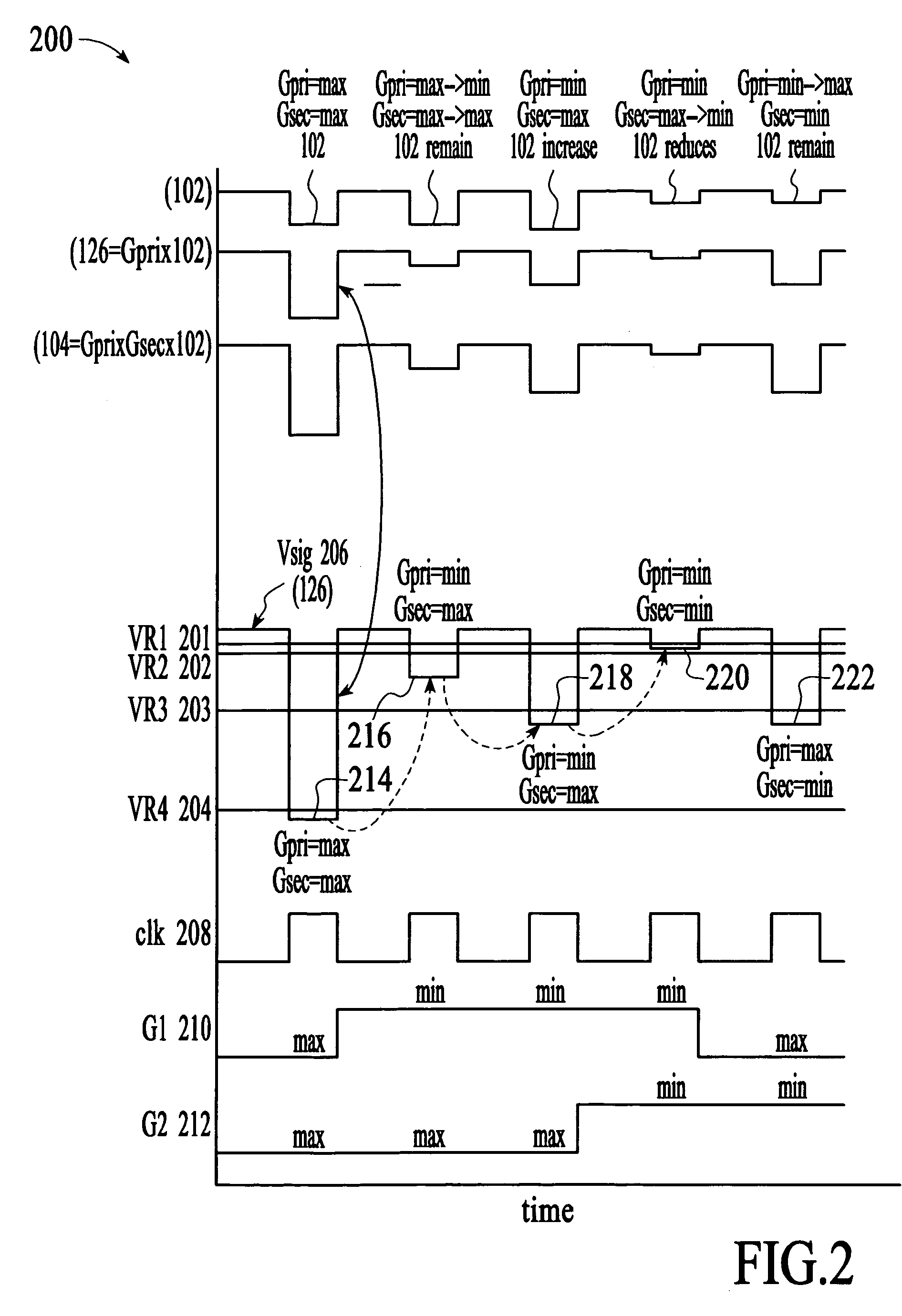Fast-settling digital automatic gain control
a digital automatic gain control and digital gain control technology, applied in the direction of amplifiers with semiconductor devices/discharge tubes, amplifier control details, differential amplifiers, etc., can solve the problems of high distortion of output, low output value, and low efficiency of receivers and input amplifier circuits
- Summary
- Abstract
- Description
- Claims
- Application Information
AI Technical Summary
Benefits of technology
Problems solved by technology
Method used
Image
Examples
Embodiment Construction
[0014]FIG. 1 represents a fast-settling digital automatic gain control (DAGC) circuit embodiment of the present invention, and is referred to herein by the general reference numeral 100. The DAGC circuit 100 comprises a raw input signal 102 that is AGC-amplified to produce a signal output 104. For example, the circuit 100 can comprise the front-end of an optical fiber channel receiver. Input signal 102 can be the output of a transimpedance amplifier which converted the received photo current from a PIN-photodiode to voltage signal and the output signal 104 can be provided to a quantizer. The DAGC circuit 100 has two stages, the first stage comprises a primary amplifier (A1) 106 that has its inverting input connected to ground by a resistor 108 and a fixed feedback resistor 110. In one example, primary amplifier 106 can be a low-noise transimpedance (TZ) type like an Analog Devices ADN2882.
[0015] The ratio of resistor 110 to resistor 108 determines the maximum gain. Input signal 102...
PUM
 Login to View More
Login to View More Abstract
Description
Claims
Application Information
 Login to View More
Login to View More - R&D
- Intellectual Property
- Life Sciences
- Materials
- Tech Scout
- Unparalleled Data Quality
- Higher Quality Content
- 60% Fewer Hallucinations
Browse by: Latest US Patents, China's latest patents, Technical Efficacy Thesaurus, Application Domain, Technology Topic, Popular Technical Reports.
© 2025 PatSnap. All rights reserved.Legal|Privacy policy|Modern Slavery Act Transparency Statement|Sitemap|About US| Contact US: help@patsnap.com



